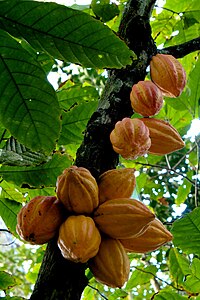
Photo from wikipedia
The production of high-quality wines is strictly related to the correct management of the vineyard, which guarantees good yields and grapes with the right characteristics required for subsequent vinification. Winegrowers… Click to show full abstract
The production of high-quality wines is strictly related to the correct management of the vineyard, which guarantees good yields and grapes with the right characteristics required for subsequent vinification. Winegrowers face a variety of challenges during the grapevine cultivation cycle: the most notorious are fungal and oomycete diseases such as downy mildew, powdery mildew, and gray mold. If not properly addressed, these diseases can irremediably compromise the harvest, with disastrous consequences for the production and wine economy. Conventional defense methods used in the past involved the use of chemical pesticides. However, such approaches are in conflict with the growing attention on environmental sustainability and shifts from the uncontrolled use of chemicals to the use of integrated approaches for crop protection. Improvements in genetic knowledge and the availability of novel biotechnologies have created new scenarios for possibly producing grapes with a reduced, if not almost zero, impact. Here, the main approaches used to protect grapevines from fungal and oomycete diseases are reviewed, starting from conventional breeding, which allowed the establishment of new resistant varieties, followed by biotechnological methods, such as transgenesis, cisgenesis, intragenesis and genome editing, and ending with more recent perspectives concerning the application of new products based on RNA interference (RNAi) technology. Evidence of their effectiveness, as well as potential risks and limitations based on the current legislative situation, are critically discussed.
Journal Title: Journal of experimental botany
Year Published: 2022
Link to full text (if available)
Share on Social Media: Sign Up to like & get
recommendations!